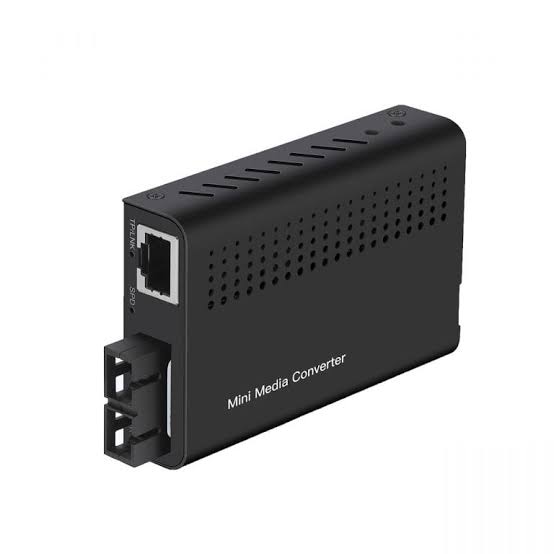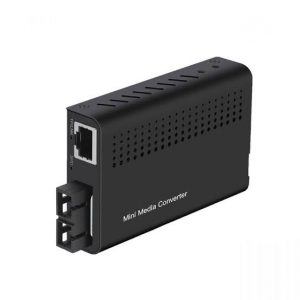What is A Media Converter
Media converter, also known as network converter, fiber to ethernet converter, and fiber media converter, is a signal conversion device to convert electrical signals of unshielded twisted-pair copper cable to optical signals of fiber optic cable. Media converters can extend the Ethernet transmission distance, expand the Ethernet coverage radius, and make the interconnection between servers, repeaters, hubs, terminals and terminals faster. Using media converters to construct a network can save an amount of network investment.
FAQs When Configuring A Media Converter
Q1. The power light is not on.
Power failure.
Q2. If the Los light is not on, there must be the following faults:
(a) The optical cable from the computer room to the client has been broken.
(b) The slots of SC pigtail and media converter are not plugged in or disconnected.
Q3. If the link light is not on, there may be the following conditions:
(a) Check whether the optical fiber line is open circuit;
(b) Check whether the loss of optical fiber line is too large and exceeds the receiving range of the equipment.
(c) Check whether the optical fiber interface is correctly connected. The local TX is connected with the remote RX, and the remote TX is connected with the local RX.
(d) Check whether the optical fiber connector is intact and inserted into the equipment interface, whether the jumper type matches the equipment interface, whether the equipment type matches the optical fiber, and whether the transmission length of the equipment matches the distance.
Q4. The circuit link light does not light up. The fault may be as follows:
(a) Check whether the network cable is open circuit.
(b) Check whether the connection type matches: network card and router and other equipment use cross line, and switch, hub and other equipment use straight line.
(c) Check whether the transmission rate of the device matches.
Q5. The network packet loss is serious, and the possible faults are as follows:
(a) The electrical port of the media converter does not match the duplex mode of the network device interface or the device interfaces at both ends.
(b) There is a problem between the twisted pair and RJ-45 head, so it should be tested.
(c) Optical fiber connection problems, whether the jumper is aligned with the equipment interface, whether the pigtail matches the jumper and coupler types, etc.
Q6. After the media converter is connected, the two ends cannot communicate
(a) The optical fiber is connected reversely, and the optical fiber connected by TX and Rx is switched.
(b) The connection between RJ45 interface and external equipment is incorrect (pay attention to direct connection and splicing).
Q7. The communication crashes after a period of time, that is, the communication cannot be resumed after restart
This phenomenon is generally caused by the switch. The switch will carry out CRC error detection and length verification on all received data. The packets with errors will be discarded and the correct packets will be forwarded. However, in this process, some packets with errors cannot be detected in CRC error detection and length verification. Such packets will not be sent or discarded in the forwarding process. They will accumulate in the dynamic buffer and will never be sent out. When the buffer is full, the switch will crash. Because the communication can be restored to normal by restarting the media converter or the switch at this time, users usually think it is the problem of the media converter.
Q8. Media converter test method if there is a problem with the media converter connection, please test according to the following methods to find out the cause of the fault
(a) Near end test:
The computers at both ends can ping. If you can ping, it proves that there is no problem with the media converter. If the near end test fails to communicate, it can be judged that the media converter is faulty.
(b) Remote test:
The computers at both ends are connected to Ping. If Ping is not available, you must check whether the optical path connection is normal and whether the transmitting and receiving power of the media converter is within the allowable range. If you can ping, it proves that the optical path connection is normal. It can be judged that the fault is on the switch.
(c) Remote test to determine the fault point:
First connect one end to the switch and Ping both ends. If there is no fault, it can be judged as the fault of another switch.
Conclusion
The above details and answers common questions that may be encountered in the process of using the media converter. Hope it’s helpful for you. If you encounter problems that are not listed, please feel free to consult QSFPTEK tech team via sales@qsfptek.com. QSFPTEK.COM also provides media converter products with two-year warranty.

